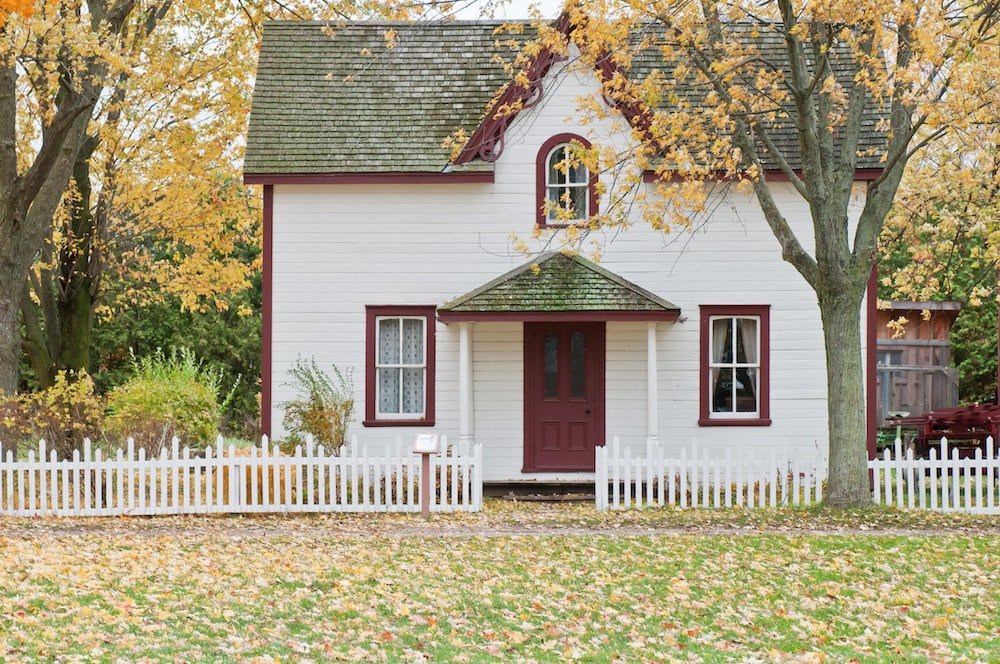
If one of your goals for 2022 is buying a home, you’re in the right place. Mortgage rates continue to stay low, but the market is beginning to show signs that rates could be shifting upwards. As a result, one of the biggest questions we hear from homebuyers is whether or not to apply for a fixed-rate mortgage or an adjustable-rate mortgage.
It’s not a quick answer, but this article can help you decide which home loan fits your financial goals.
RELATED: See the Top 5 home loans most popular for first-time homebuyers
Fixed-Rate Mortgages
Fixed-rate mortgages are the most popular type of home loan.
Fixed-rate home loans are typically offered for a 30-year term or 15-year term. While fixed-rate home loans offer slightly higher mortgage rates than adjustable-rate mortgages, fixed-rate loans have stable terms for the life of the loan.
The upshot is your mortgage payment stays the same for the entire 30 years (or 15), and your rate stays the same.
A fixed-rate mortgage keeps monthly mortgage payments reliable, predictable, and easy on your budget. So no matter how the mortgage market changes, you can rest secure and know that your mortgage payment won’t change.
Adjustable-Rate Mortgages
Adjustable-rate mortgages often offer the lowest mortgage rates available.
ARM interest rates are set for an initial loan period (called an adjustment period), and then they shift according to the market. This is why the loan is called “adjustable.” Essentially, the mortgage rate adjusts along with market trends.
Adjustable-rate mortgages typically offer an initial adjustment period for 5 to 7 years, during which the mortgage rate does not change. When applying for a mortgage with an adjustable-rate mortgage, the first loan period (called an adjustment period) will be a lower interest rate and a lower mortgage payment compared to a fixed-rate mortgage.
This is ideal if you plan to stay in the home for less than the initial adjustment period for the loan. For example, if you expect to move for work within 3-5 years, or plan to sell the home for other reasons, an ARM could save you money.
Use this mortgage calculator to find out how much you can afford right now
An adjustable-rate mortgage is also ideal for buyers who want to purchase a home while mortgage rates are higher than usual. ARM loans can help homebuyers get into the housing market at a lower rate.
However, adjustable-rate mortgages often include complex changes after the initial adjustment period. For this reason, it’s important to discuss the full terms of your loan with a trusted mortgage advisor.
Find a qualified mortgage expert in your local area
Benefits of an Adjustable-Rate Mortgage
- ARM’s provide a lower mortgage payment and lower initial interest rates, benefiting homeowners who expect to own their home for only a few years.
- You could become a homeowner sooner with an ARM. Lower interest rates translate to a lower initial mortgage payment and a lower DTI (debt-to-income) ratio.
- ARM’s offer homeowners more buying power. Since ARM’s offer a lower interest rate, you could qualify for a higher purchase price and a bigger home.
- When the market shifts downward, your mortgage rate automatically decreases. This means a lower mortgage payment or the option to refinance at a lower interest rate.
- Invest your extra cash elsewhere during low-interest periods of your ARM home loan, and your mortgage payment drops.
Drawbacks of an Adjustable-Rate Mortgage
- The market is ultimately unpredictable, and you may end up with an unexpectedly high monthly mortgage payment.
- Initial loan caps might make the first readjustment period costly.
- Mortgage lenders have more options when it comes to ARM home loans. A customized ARM loan could introduce a number of complicated factors like high fees and caps. This could put you in a mortgage contract that is difficult to understand.
Related: Check out the best custom loan options for 2022
How to Decide Between a Fixed-Rate Mortgage vs. Adjustable-Rate Mortgage
1. Think about how long you expect to live in the home.
An adjustable-rate mortgage is ideal for homeowners looking to stay put for 5 to 7 years, which is the typical adjustment period for ARM home loans. The “initial adjustment period” is the length of time that your mortgage rate will stay the same. After this period is over, your rate will change with the market, which could increase your mortgage payment.
If you expect to live in your new home for a longer period of time, a fixed-rate mortgage can bring stability. You won’t need to worry about mortgage rates or your mortgage payment changing with a fixed-rate mortgage.
You’ll always have the option to refinance, no matter which home loan you have initially. Just be aware that you’ll be subject to current mortgage rates, closing costs, and one-time fees to secure your new home loan when you refinance.
2. Understand the ARM adjustment period for your home loan.
Most ARM home loans offer adjustment periods of 3 to 10 years (5-7 is the most common). Shorter adjustment periods offer lower rates, securing a low mortgage payment. However, your mortgage rate will fluctuate with the market once the adjustment period ends. Talk to your mortgage advisor about the detailed terms of your home loan including caps, added fees, and potential balloon payments.
A fixed-rate mortgage sets your mortgage payment (and your interest) for the entire loan term. The rate and payment will remain unchanged for the life of your loan. The longer the term, the lower your mortgage payment will be. For example, a 30-year fixed-rate mortgage will have a lower mortgage payment since you have 30 years to pay off the loan. A 15-year fixed-rate loan will have a higher payment, but you’ll pay much less in interest over the life of the loan.
3. Evaluate current mortgage rates and market trends.
The pandemic has created some historic lows for mortgage interest rates. With current trends, it might be a smart move to apply for a fixed-rate loan rather than an adjustable-rate loan. While mortgage rates might stay low, they most likely won’t go any lower.
Market experts expect mortgage rates to rise with inflation, though it’s unknown when this rise might begin to take effect.
When the market fluctuates, adjustable-rate mortgages change along with it. When interest rates increase, an ARM mortgage payment will increase too, once the adjustment period ends.
RELATED: Learn the Truth About No-Closing Cost Loans
4. Take a close look at your monthly budget and financial goals.
For many homeowners, a home is one of their largest assets. As you build your wealth, consider your mortgage payment along with your other financial goals: savings, investments, career changes, overall debt, and future purchases.
If you don’t have much room for unpredictable shifts in your monthly budget, an adjustable-rate mortgage could be risky once the adjustment period ends. Not to mention, the changes to your mortgage could be costly if the market has changed dramatically or you need to refinance unexpectedly.
On the other hand, if you have a steady income, solid employment and a positive cash flow, a change in your mortgage payment might not have a noticeable impact.
RELATED: How to FAST TRACK your application with a mortgage pre-approval
Summary
Applying for an adjustable-rate mortgage can help you get a lower mortgage rate, whether refinancing your mortgage or buying a home for the first time. For first-time homebuyers, an adjustable-rate mortgage provides flexibility, especially if you think you might sell and move to another home within 5 to 7 years.
A fixed-rate mortgage promises a mortgage rate that won’t change and steady mortgage payments for the life of the home loan. If you’re refinancing your mortgage, a fixed-rate mortgage can bring stability for years to come.
Connecting with a mortgage advisor is the best move you can make to get your best mortgage and meet your homeownership goals.
Next Steps
When you’re ready to buy a home, applying for an adjustable-rate mortgage can help you get a lower mortgage rate help you become a homeowner sooner. If you’re thinking about refinancing your mortgage, refinancing to adjustable-rate can lower your mortgage payment while keeping your options open. Connect with a local mortgage advisor to discuss your loan options and start saving money on your mortgage. We’d love to help.



